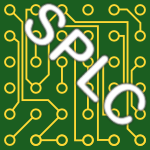36 papers:
 DATE-2015-CastrillonTSSJA #manycore #programming #question
DATE-2015-CastrillonTSSJA #manycore #programming #question- Multi/many-core programming: where are we standing? (JC, LT, LS, WS, BHHJ, MAM, AP, RJ, VR, RL), pp. 1708–1717.
 CSCW-2014-KitturPDB #information management
CSCW-2014-KitturPDB #information management- Standing on the schemas of giants: socially augmented information foraging (AK, AMP, AD, MRB), pp. 999–1010.
 HCI-AIMT-2014-ChakravartyC #artificial reality #identification #using
HCI-AIMT-2014-ChakravartyC #artificial reality #identification #using- Frontal-Standing Pose Based Person Identification Using Kinect (KC, TC), pp. 215–223.
 HCI-AS-2014-LouLP #distance #game studies #how
HCI-AS-2014-LouLP #distance #game studies #how- Distance Effect: Where You Stand Determines How Promptly You Interact with Game (XL, AXL, RP), pp. 614–621.
 KDD-2014-Chen0 #big data #documentation #mining #topic
KDD-2014-Chen0 #big data #documentation #mining #topic- Mining topics in documents: standing on the shoulders of big data (ZC, BL), pp. 1116–1125.
 VLDB-2013-SametAFLS #database #interface #named #query
VLDB-2013-SametAFLS #database #interface #named #query- PhotoStand: A Map Query Interface for a Database of News Photos (HS, MDA, BCF, MDL, JS), pp. 1350–1353.
 CHI-2013-JungBLK #design
CHI-2013-JungBLK #design- Make it move: a movement design method of simple standing products based on systematic mapping of torso movements & product messages (JJ, SHB, JHL, MSK), pp. 1279–1288.
 DUXU-CXC-2013-KuramotoIYT #exclamation #gamification #people
DUXU-CXC-2013-KuramotoIYT #exclamation #gamification #people- Stand Up, Heroes! : Gamification for Standing People on Crowded Public Transportation (IK, TI, KY, YT), pp. 538–547.
 HIMI-D-2013-WuCLB #evaluation #usability
HIMI-D-2013-WuCLB #evaluation #usability- Usability Evaluation of the Universal Computer Workstation under Supine, Sitting and Standing Postures (HCW, MCC, CLL, MYB), pp. 151–156.
 ITiCSE-2012-Harel #experience
ITiCSE-2012-Harel #experience- Standing on the shoulders of a giant: one person’s experience of turing’s impact (DH), p. 3.
 ICALP-v2-2012-Harel #experience #summary
ICALP-v2-2012-Harel #experience #summary- Standing on the Shoulders of a Giant — One Persons Experience of Turings Impact (Summary of the Alan M. Turing Lecture) (DH), pp. 16–22.
 DATE-2011-RinaudoGCMP #approach #design #energy #performance #power management
DATE-2011-RinaudoGCMP #approach #design #energy #performance #power management- Moving to Green ICT: From stand-alone power-aware IC design to an integrated approach to energy efficient design for heterogeneous electronic systems (SR, GG, AC, AM, MP), pp. 1127–1128.
 CHI-2011-CheungH #comprehension #game studies
CHI-2011-CheungH #comprehension #game studies- Starcraft from the stands: understanding the game spectator (GC, JH), pp. 763–772.
 DHM-2011-HowardY #case study #predict
DHM-2011-HowardY #case study #predict- Predicting Support Reaction Forces for Standing and Seated Tasks with Given Postures-A Preliminary Study (BH, J(Y), pp. 89–98.
 ICPC-2009-KnieselB #approach #data fusion #design pattern #detection
ICPC-2009-KnieselB #approach #data fusion #design pattern #detection- Standing on the shoulders of giants — A data fusion approach to design pattern detection (GK, AB), pp. 208–217.
 STOC-2009-LinPV #concurrent #framework #security
STOC-2009-LinPV #concurrent #framework #security- A unified framework for concurrent security: universal composability from stand-alone non-malleability (HL, RP, MV), pp. 179–188.
 SPLC-2009-JepsenB #product line
SPLC-2009-JepsenB #product line- Running a software product line: standing still is going backwards (HPJ, DB), pp. 101–110.
 CHI-2008-Freier
CHI-2008-Freier- Children attribute moral standing to a personified agent (NGF), pp. 343–352.
 DHM-2007-JiaZWFJZ #process
DHM-2007-JiaZWFJZ #process- The Influence of Shoe-Heel Height on Knee Muscle Activity of Transtibial Amputees During Standing (XJ, JZ, RW, LF, DJ, MZ), pp. 640–645.
 SAC-2006-BendaJPSC #algorithm #distributed #resource management
SAC-2006-BendaJPSC #algorithm #distributed #resource management- A distributed stand-in agent based algorithm for opportunistic resource allocation (PB, PJ, MP, NS, MMC), pp. 119–125.
 CSEET-2004-Anger #question
CSEET-2004-Anger #question- Will the Real Software Engineer Please Stand Up? (FDA), pp. 4–5.
 DAC-2003-OMahonyYHW #design #network #using
DAC-2003-OMahonyYHW #design #network #using- Design of a 10GHz clock distribution network using coupled standing-wave oscillators (FO, CPY, MH, SSW), pp. 682–687.
 CSEET-2003-DalcherW #education #re-engineering
CSEET-2003-DalcherW #education #re-engineering- Together We Stand: Group Projects for Integrating Software Engineering in the Curriculum (DD, MW), p. 193–?.
 DATE-2001-NaiduJ #power management
DATE-2001-NaiduJ #power management- Minimizing stand-by leakage power in static CMOS circuits (SRN, ETAFJ), pp. 370–376.
 RE-2001-Gonzales #question #what
RE-2001-Gonzales #question #what- Systems or Software: What Should the “S” in SRE Stand for? (RG), p. 281.
 ICML-2000-MorimotoD #behaviour #learning #using
ICML-2000-MorimotoD #behaviour #learning #using- Acquisition of Stand-up Behavior by a Real Robot using Hierarchical Reinforcement Learning (JM, KD), pp. 623–630.
 DAC-1999-SirichotiyakulEOZDPB #power management
DAC-1999-SirichotiyakulEOZDPB #power management- Stand-by Power Minimization Through Simultaneous Threshold Voltage Selection and Circuit Sizing (SS, TE, CO, JZ, AD, RP, DB), pp. 436–441.
 AGTIVE-1999-Levialdi #question #visual notation
AGTIVE-1999-Levialdi #question #visual notation- Visual Languages: Where Do We Stand? (SL), pp. 145–164.
 VLDB-1997-AlonsoHST #distributed
VLDB-1997-AlonsoHST #distributed- Distributed Processing over Stand-alone Systems and Applications (GA, CH, HJS, MT), pp. 575–579.
 HCI-CC-1997-VendaL #assembly #evaluation #using
HCI-CC-1997-VendaL #assembly #evaluation #using- Ergonomic Evaluation of Manual Assembly Operations Using Direct and Indirect Observation Workstations in Sitting and Standing Positions (VFV, SSL), pp. 855–858.
 CHI-1996-GraefeWMD #design #music
CHI-1996-GraefeWMD #design #music- Designing the Muse: A Digital Music Stand for the Symphony Musician (CG, DW, JM, OD), p. 436–?.
 SAC-1996-HoskinsHKW #simulation
SAC-1996-HoskinsHKW #simulation- Ray tracing and the simulation of boreal forest stand dynamics (JAH, WDH, NCK, PYHW), pp. 447–453.
 ICSE-1996-Vekens #implementation #object-oriented
ICSE-1996-Vekens #implementation #object-oriented- An Object-Oriented Implementation of B-ISDN Signalling — Part 2: Extendability Stands the Test (AWvdV), pp. 125–132.
 SAC-1995-HoskinsH #visualisation
SAC-1995-HoskinsH #visualisation- Ray Tracing as a tool for visualization of pathogen spread in natural forest stands (JAH, WDH), pp. 61–64.
 OOPSLA-1988-Sridhar #configuration management
OOPSLA-1988-Sridhar #configuration management- Configuring Stand-Alone Smalltalk-80 Applications (SS), pp. 95–104.
 DAC-1980-Fitch
DAC-1980-Fitch- Will your bridge stand the load? (Position Paper) (AEF), p. 518.
 DATE-2015-CastrillonTSSJA #manycore #programming #question
DATE-2015-CastrillonTSSJA #manycore #programming #question CSCW-2014-KitturPDB #information management
CSCW-2014-KitturPDB #information management HCI-AIMT-2014-ChakravartyC #artificial reality #identification #using
HCI-AIMT-2014-ChakravartyC #artificial reality #identification #using HCI-AS-2014-LouLP #distance #game studies #how
HCI-AS-2014-LouLP #distance #game studies #how KDD-2014-Chen0 #big data #documentation #mining #topic
KDD-2014-Chen0 #big data #documentation #mining #topic VLDB-2013-SametAFLS #database #interface #named #query
VLDB-2013-SametAFLS #database #interface #named #query CHI-2013-JungBLK #design
CHI-2013-JungBLK #design DUXU-CXC-2013-KuramotoIYT #exclamation #gamification #people
DUXU-CXC-2013-KuramotoIYT #exclamation #gamification #people HIMI-D-2013-WuCLB #evaluation #usability
HIMI-D-2013-WuCLB #evaluation #usability ITiCSE-2012-Harel #experience
ITiCSE-2012-Harel #experience ICALP-v2-2012-Harel #experience #summary
ICALP-v2-2012-Harel #experience #summary DATE-2011-RinaudoGCMP #approach #design #energy #performance #power management
DATE-2011-RinaudoGCMP #approach #design #energy #performance #power management CHI-2011-CheungH #comprehension #game studies
CHI-2011-CheungH #comprehension #game studies DHM-2011-HowardY #case study #predict
DHM-2011-HowardY #case study #predict ICPC-2009-KnieselB #approach #data fusion #design pattern #detection
ICPC-2009-KnieselB #approach #data fusion #design pattern #detection STOC-2009-LinPV #concurrent #framework #security
STOC-2009-LinPV #concurrent #framework #security SPLC-2009-JepsenB #product line
SPLC-2009-JepsenB #product line CHI-2008-Freier
CHI-2008-Freier DHM-2007-JiaZWFJZ #process
DHM-2007-JiaZWFJZ #process SAC-2006-BendaJPSC #algorithm #distributed #resource management
SAC-2006-BendaJPSC #algorithm #distributed #resource management CSEET-2004-Anger #question
CSEET-2004-Anger #question DAC-2003-OMahonyYHW #design #network #using
DAC-2003-OMahonyYHW #design #network #using CSEET-2003-DalcherW #education #re-engineering
CSEET-2003-DalcherW #education #re-engineering DATE-2001-NaiduJ #power management
DATE-2001-NaiduJ #power management RE-2001-Gonzales #question #what
RE-2001-Gonzales #question #what ICML-2000-MorimotoD #behaviour #learning #using
ICML-2000-MorimotoD #behaviour #learning #using DAC-1999-SirichotiyakulEOZDPB #power management
DAC-1999-SirichotiyakulEOZDPB #power management AGTIVE-1999-Levialdi #question #visual notation
AGTIVE-1999-Levialdi #question #visual notation VLDB-1997-AlonsoHST #distributed
VLDB-1997-AlonsoHST #distributed HCI-CC-1997-VendaL #assembly #evaluation #using
HCI-CC-1997-VendaL #assembly #evaluation #using CHI-1996-GraefeWMD #design #music
CHI-1996-GraefeWMD #design #music SAC-1996-HoskinsHKW #simulation
SAC-1996-HoskinsHKW #simulation ICSE-1996-Vekens #implementation #object-oriented
ICSE-1996-Vekens #implementation #object-oriented SAC-1995-HoskinsH #visualisation
SAC-1995-HoskinsH #visualisation OOPSLA-1988-Sridhar #configuration management
OOPSLA-1988-Sridhar #configuration management DAC-1980-Fitch
DAC-1980-Fitch









